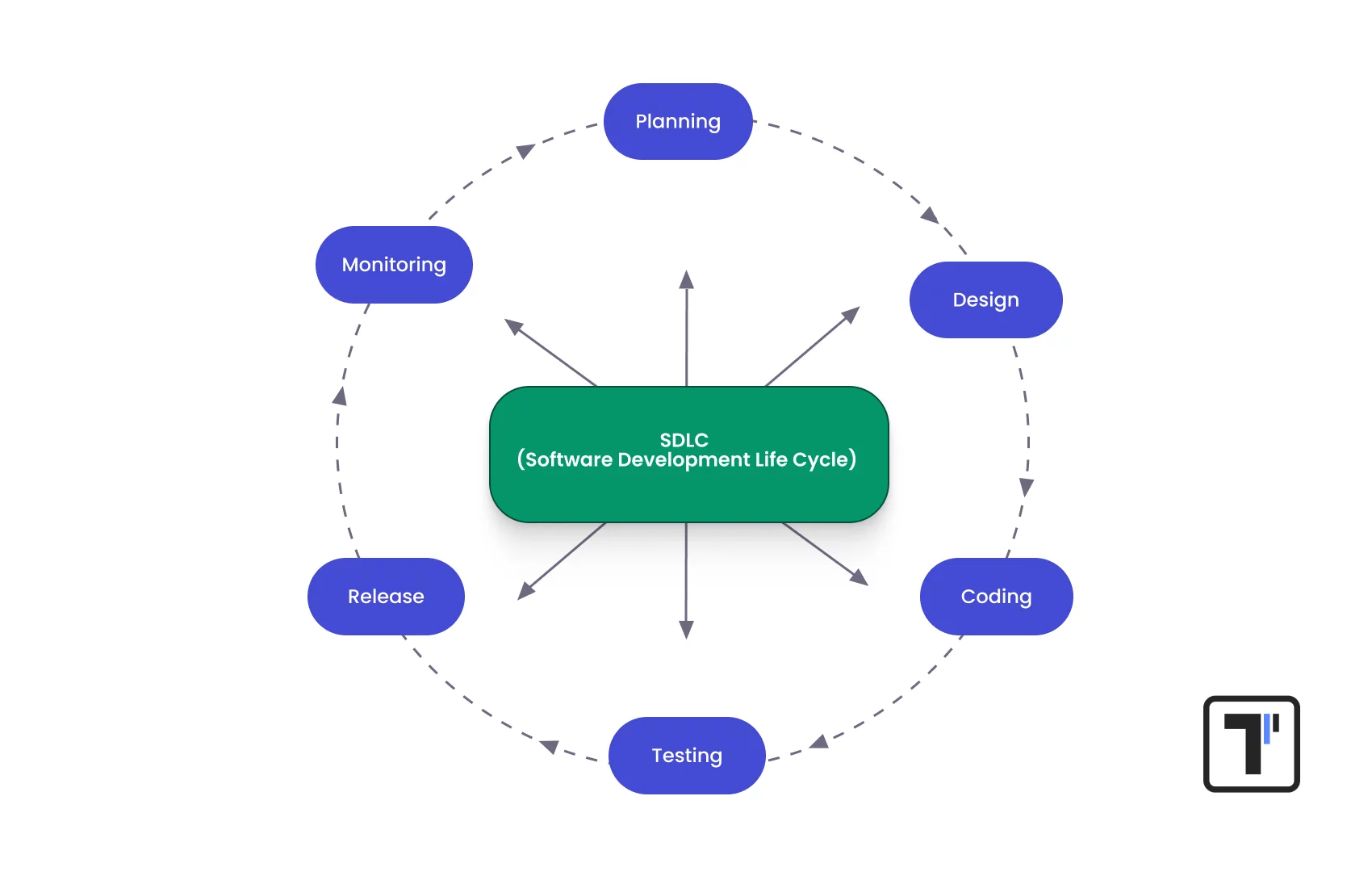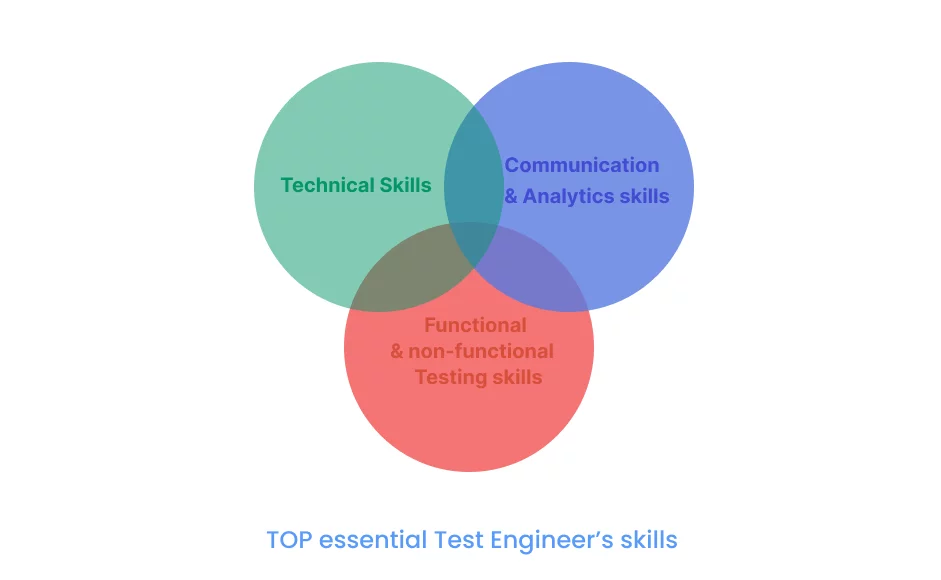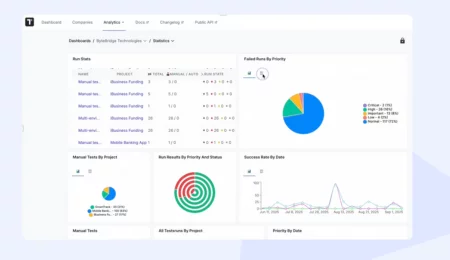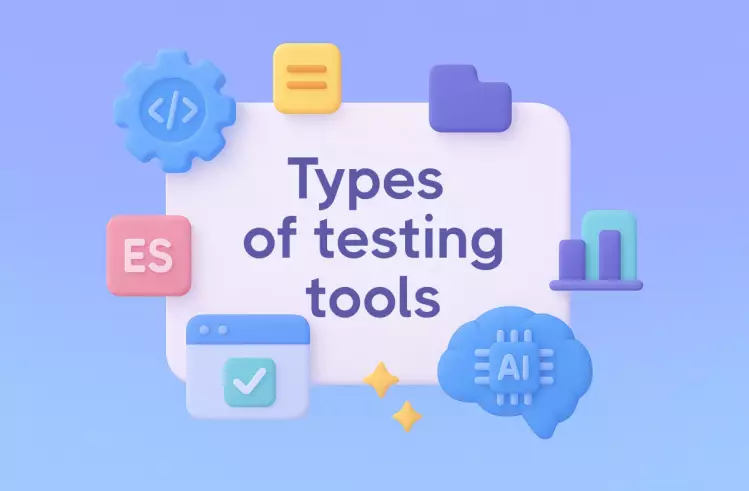Software testing is an important stage of the development process. Not surprised? Naturally, since the overall quality of the product determines customer satisfaction and the overall success of the project. That is, your profit. Let us explain with an example.
Suppose you have created an e-commerce application, but didn’t test its performance, UX, and other aspects thoroughly enough. With a good marketing strategy, many users will likely download and install your app. However, according to statistics, 90% of users will delete it right after experiencing a negative user experience. This includes slow loading speed, bugs and crashes, an inconvenient user interface, etc.
To avoid such a situation, you need to make sure you build a strong QA team where everyone works toward achieving quality standards according to their responsibilities. In turn, these responsibilities are defined by the roles of the team members in the project. Let’s look at the main ones.
What is QA Role And What Are Its Key Types?
Usually, when it comes to the quality assurance process, it is common to refer to the position of a QA tester. However, it is obvious that a single specialist is not able to perform absolutely all tasks in the project — from writing test cases to test automation and managing the workflow.
That is why, in every project, quality assurance responsibilities are divided among several Quality Assurance specialists.
What Is the Role of a QA Engineer?
A quality assurance engineer is a member of the testing team whose direct responsibility is to perform automated and manual testing. Based on the results of software tests, they must identify potential issues in the software product and report them to the software development team.
A key feature of this role is close collaboration with developers, analysts, and project managers. This is necessary to thoroughly verify the implementation of the functions of the digital solution.
QA Role in Software Testing and Responsibilities
- developing and executing test cases
- identifying, reporting, and verifying defects
- performing automated and manual testing
- collaborating as a team to maintain the highest quality standards.
Necessary Skills for the Role of a QA Engineer
- Experience with test automation tools (Playwright, Selenium, Cypress, Cucumber, etc.), bug tracking systems (e.g., Jira), and other platforms used in the workflow.
- Knowledge of best practices of manual testing.
- Years of experience in test automation.
Test Analyst: QA Role Description
These specialists focus on analyzing business logic and software product requirements. Based on these, test scripts are subsequently created. One could say this is the cornerstone of QA processes. After all, clearly formulated requirements are the key to verifying whether the final product meets user and business expectations.
The role of a software quality analyst is usually most significant in the early stages of the software development life cycle. It is at the beginning of product development that it is important to define the requirements.
The Role of QA Analyst: Responsibilities
- understanding business requirements
- writing test scripts based on them
- performing functional and non-functional testing
- creating a test plan.
Necessary Skills QA Analyst
- The ability to apply critical thinking and analytical skills to precisely identify user and business needs.
- Technical expertise (experience using defect tracking tools and TMS, working with user stories, skills in test design and documentation, etc.).
- Teamwork skills for effective communication with the development team and other software testers.
What is the Role of a QA Lead?
Like any leader, a QA Lead must manage. Due to the specifics of the industry — they manage the work of QA team members. A lot depends on this specialist in a project. Will the deadlines be met? How well will the team manage to optimize testing efforts? Will tasks be distributed correctly? They also act as a link between software testers and stakeholders.
QA Lead Responsibilities
- managing the QA team
- optimizing testing activities
- assigning tasks
- mentoring junior team members
- controlling the alignment of testing strategies with project goals
- informing stakeholders about the testing progress.
Necessary Skills
- Experience in developing testing strategies.
- Technical skills in running automated and manual tests.
- Strong leadership qualities.
- Time management skills.
QA Manager Role
A QA or test manager is a specialist responsible for literally all aspects of the testing process. They develop strategic planning for quality assurance activities. What does this include? It involves overseeing the entire team’s work, managing the budget, evaluating the readiness of the application for release, and much more.
The quality of the QA manager’s work determines how well the quality assurance goals align with the business requirements.
QA Manager Responsibilities
- defining overall quality assurance processes
- managing the project budget
- allocating resources
- coordinating actions with cross-functional teams
- developing internal quality standards
- conducting audits.
Necessary Skills
- Project management skills.
- Experience in building an effective QA team.
- Deep understanding of various types of testing.
- Knowledge in the field of test management.
Test Architect – A Key QA Role in Agile
Their task is to create and maintain a unified testing ecosystem. This specialist is directly involved in selecting optimal test execution tools, automation frameworks, CI\CD platforms, and more. The scalability of the testing ecosystem in a project largely depends on the test architect. Their focus also includes maintainability and efficiency.
Thanks to this team member’s deep technical expertise, they serve as a true mentor to other specialists, such as automation engineers.
Test Architect Responsibilities
- ensuring a reliable testing infrastructure in the project
- selecting tools and technology stack
- supporting the scalability and efficiency of systems
- implementing best practices in QA processes.
Necessary Skills
- Experience working with popular frameworks, test management systems, and other tools.
- Understanding how CI\CD pipelines work and the ability to integrate test automation into them.
- Skills in designing test architecture.
Software Development Engineer as a Role of QA in Agile
A Software Development Engineer in Test, or SDET, is a specialist in software engineering engaged in test automation. What are their responsibilities? Let’s break it down. First, the SDET writes and maintains test code. Second, they develop testing tools. And finally, another area of responsibility is unit and integration testing.
These QA team members actively participate in the development process. Often, they automate tests and verify the code even before the user interface is created.
SDET Responsibilities
- development of automated tests;
- creation of testing tools;
- collaboration with the software development team for code-level testing;
- participation in unit, integration, and API testing.
Necessary Skills
- Expertise in test automation across various types of testing.
- Collaboration with the quality assurance team to ensure the final product meets high standards.
- Deep knowledge of scripting languages.
- Experience with test automation tools, testing frameworks, etc.
- Understanding of the intricacies of the software development life cycle.
- Creating a Premium Product and QA Role in It
In the previous section, we discussed the significance of each QA role on a project. However, they all share a common goal: they all strive to develop high quality digital solutions.
So, what aspects of the project are under their responsibility?
Core Areas of Responsibilities for QA Testers
Regression testing
Regardless of the QA role, every member of the testing team must ensure that changes made do not break existing functionality. For this, it’s important to:
→ refresh regression test sets promptly
→ perform this type of testing after every build
→ prioritize areas for testing based on changes in the codebase.
Performance testing
How does the application perform under expected load? And under peak load? The QA team must address these questions through performance testing. In this process, they should:
→ develop performance test scenarios
→ use specialized test execution tools
→ identify and analyze bottlenecks in the system.
User acceptance testing (UAT)
Each team member, whether a test engineer or manual tester, must support users in verifying the digital solution’s alignment with their expectations. Specialists can help by:
→ preparing UAT test scripts and environments
→ familiarizing users with test cases
→ gathering feedback.
Exploratory testing
If predefined test cases do not produce results, the QA team should conduct testing based on their expertise. This helps uncover edge-case issues. To do this, they should:
→ schedule exploratory tests during sprints
→ identify areas most prone to errors
→ clearly document the results obtained.
Non-functional testing
To be considered a high-quality digital product, simply implementing the required functionality is not enough. It is also important to verify its availability, security, scalability, etc. For this, testers should:
→ check the application’s behavior under various network conditions
→ perform security testing
→ conduct accessibility checks, etc.
Communication with developers
The responsibilities of a QA professional go beyond identifying defects; they must promptly inform developers to resolve the issues quickly. Afterward, they have another task — to verify the fix. To ensure effective communication on the project, it is important to:
→ actively participate in daily standups and other meetings
→ provide quality defect reports
→ provide timely feedback.
Creating reports
How should the testing process ideally be? Transparent to all stakeholders. They should be able to track the progress of testing, the status of detected defects, and the readiness of the application for release. To ensure this, it is necessary to:
→ thoroughly document testing results (for example, preparing a test summary report)
→ provide stakeholders access to dashboards
→ use specific metrics (e.g., the percentage of successful tests, defect density, etc.).
Application testing best practices
This includes using the best test execution tools, automation frameworks, TMS, CI\CD tools, etc. The QA team must also select the most appropriate testing methodology and techniques for the project. For this, it is important to:
→ ensure traceability between requirements and tests
→ set up CI\CD integration
→ use version control for test artifacts.
Planning and executing tests
All members of the testing team must contribute to planning and executing tests according to the development methodology followed on the project (Agile, Waterfall, etc.). To achieve this, the following steps are necessary:
→ develop test plans
→ execute tests according to software development stages
→ monitor progress and modify the test plan as needed.
Interaction with all stakeholders
Besides developers, the tester — regardless of their QA role — must act as a liaison between technical and business groups. This ensures that all departments understand the quality assurance challenges. Achieving this requires the following:
→ maintain communication with all stakeholders
→ hold various meetings, including retrospectives
→ communicate technical defects in a format understandable to non-technical specialists.
QA Tester Role at Each Stage of the SDLC
It is a mistake to think that software test engineers, test analysts, QA lead, and other quality assurance professionals only participate in the testing process. Disagree? Let us quickly prove our point.

Conceptual Blueprinting
The work of a QA specialist begins at the very early stage of SDLC (Software Development Life Cycle) when planning and designing the software product. What activities does the QA specialist participate in? First of all, it involves defining business requirements and acceptance criteria. Then, they review the specifications and design documentation. This helps identify issues at the very start of the process.
Additionally, their responsibilities include identifying potential risks and creating a test plan based on the defined requirements.
Build Execution
Even at the coding stage, QA professionals are needed. They must closely collaborate with the development team. Thanks to this collaboration, the tester can understand the implementation details and ensure that the requirements are properly transformed into code.
Since testing in Agile runs parallel to development, test cases should already start being prepared at this stage. It is also recommended to verify the coverage of unit tests to ensure comprehensive testing of the core functionality.
Quality Validation
This is the actual quality assurance process. It involves performing various types of testing, followed by registering detected defects, reporting them to developers, and controlling the implemented fixes.
If the project has test automation, this is also added to the QA specialist’s responsibilities – in particular, the quality assurance engineer.
Solution Launch
The release of the digital solution is possible only after thorough verification of its readiness for deployment in the production environment. For this, testers perform smoke testing.
It is also important to create rollback plans in case critical failures are detected.
Operational Assurance
Even after the software product is released, the work of the QA specialist on the project does not end. After the launch, they should monitor the application’s performance, collect user feedback, and analyze various incidents.
This approach helps identify the root cause of the problem and, subsequently, update test cases to cover missed scenarios.
TOP Skills Required for Each QA Role
To build a career in quality assurance, even beginner software testers must work on improving certain skills and abilities.

Technical Expertise
A QA specialist will not be able to perform their direct duties without understanding the basics of software development. What should you be knowledgeable about?
- Popular programming languages. Practice coding in Java, Python, or JavaScript – this will be useful when writing and executing test scripts. If you are just starting your career path, pay attention to the most common languages. For example, study the ranking according to the TIOBE Index:

- Development methodologies. It is important to understand what the work of the development team means in methodologies like Agile, Waterfall, etc. How will QA processes differ? This will help adjust the testing strategy to the characteristics of the working environment.
- Specific tools. Learn to work with Jira and CI\CD pipelines. These are used not only in development but are also actively applied in testing. Such skills also enhance communication on the project.
Testing Skills
By developing the necessary skills for performing direct professional duties, you will be able to confidently advance in your career. These include:
- Experience with popular testing tools. This includes test execution tools, TMS, and automation frameworks.
- Knowledge of various testing methods and types. A qualified QA specialist should be able to test both functional and non-functional aspects of an application. It’s also important to understand the crucial role of performing different types of tests – from unit tests at early stages to integration and regression tests.
- Expertise in test automation. Today, the focus in QA is on test automation. This helps accelerate test execution, improve accuracy, and reduce required resources. Therefore, experience in creating and running automated test scripts is essential.
Soft Skills
Lastly, alongside technical knowledge and experience, it’s important to have certain personal qualities. These include:
- Communication skills. Without these, collaboration within the team, with developers, and with stakeholders is impossible.
- Problem-solving ability. A QA specialist must react quickly to problems and help resolve them in a timely manner.
- Time-management skills. If you cannot organize your time (and for some specialists, the team’s time), regardless of your QA role, the project deadlines are at risk.
- Critical thinking. A tester must be able to critically assess the product being created. When necessary, they should challenge existing assumptions and make well-founded conclusions.
Let’s summarize: What is the role of QA in software testing?
The role of the QA specialist is the key to creating a software product that meets high standards of quality. A qualified QA engineer specializes in performing manual testing and its automation. A test analyst gathers product requirements and ensures their implementation. QA Lead and QA manager are responsible for organizing and coordinating work processes.
Description of QA role means that the test architect and SDET are also important on the project. The first works on creating the testing ecosystem, while the second focuses on test automation.
Together, they create a seamless mechanism that contributes to the development of a high-quality final product.
The main point is, don’t forget. You always have room to grow. By continuously working on your knowledge and skills, you can progress in your career from a QA tester to management roles.








